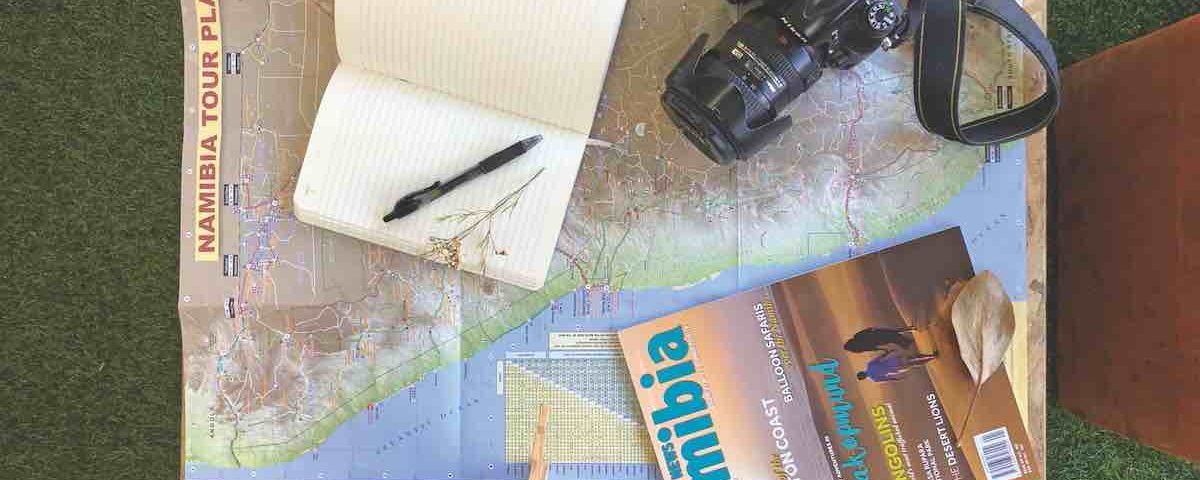Putting Things in Perspective: Journey into the Canyon
August 27, 2019
Heirloom, honey and seeds of the future
August 27, 2019Willie Olivier is a veteran journalist and travel writer. He has been compiling guides and travel directories for visitors to Namibia since before independence. In this new series for Travel News Namibia, Willie compiles notes, thoughts and take-aways from his travels. Interesting facts, little-known happenings and anecdotes of the adventures of this vagabond.
Text and Photographs Willie Olivier
TRAVELLING TOGETHER
Exhaustion, dehydration, aching muscles and discomfort are not unusual on an extended hiking trip, irrespective of how fit you are – although it helps to be fit, of course. All of this could be caused by temperatures as hot as Hades, icy cold weather, rough terrain underfoot, steep ascents, slippery descents or huge blisters.
Over the course of hiking thousands of kilometres in my younger days (and less frequently nowadays), I have experienced all of these emotions. Sometimes the spirit is willing and the flesh is weak. Other times, the flesh is willing but the spirit is weak.
So when the going gets tough, physically or mentally, I draw inspiration from an Oriental martial arts saying: “The body and the mind must travel together.” I simply slow my pace down and if my body ‘tells’ me that it is about to cease up, I would take a 30-second break while standing, re-align the body and the mind and continue pushing on. Believe you me, it works.
FAMOUS MISSIONARY WAS ALSO A KEEN AMATEUR BOTANIST
The scientific names of plants, animals and birds often provide fascinating information about various aspects of the species itself or in many cases of whoever first recorded it. Although the Finnish missionary Martti Rautanen is best remembered for his missionary endeavours in Owamboland, he had a keen interest in ethnology. His ethnographic collections were donated to the National Museum of Finland. Rautanen was also an avid amateur botanist and sent numerous plant specimens to the University of Zurich, Switzerland, for identification.
The genus name of the manketti tree (Schinziophyton rautanenii) honours the Swiss botanist, Hans Schinz, who collected plants in Namibia towards the end of the 1800s, while the species was named after Rautanen. In addition to the manketti, several other plants species, as well as two plant genera, Rautanenia and Neorautanenia, honour his name and are reminders of his contribution to botany. One species, Crinum rautanenianum, a bulb that grows in seasonal pans, was classified in 1896 after Rautanen collected a specimen at Olukonda.
Rautanen’s original plant specimens are in the care of the herbarium at the University of Zurich, while other collections are housed in the Botanical Museum of the University of Helsinki and the Albany Museum, an affiliated research institute of Rhodes University in Grahamstown, South Africa.
IMAGINARY LIONS
Stories of encounters and near-encounters with lions when camping in the wilds abound. But there are not too many stories of imaginary encounters with the King of the Beasts.
Way back in the early 1990s I was camping with two companions at Liadura in what was then known as the Mamili National Park (now Nkasa Rupara National Park). The morning after our arrival we spotted a small pride of lions lying in the shade not too far from our campsite, so when darkness fell the lions were still on our minds.
Few things are as enjoyable as having a small fire going at night when you are camping. The lions were roaring in the distance, but across the Kwando River in Botswana. Close by there was the occasional splash of a hippo taking to the water. And in the flickering flames of the fire, it appeared as if something was moving just outside the circle of light.
One of my companions (name withheld to protect his dignity) suddenly said, “There’s something moving over there.” The angst in his voice was palpable. Meanwhile, the roar of the lions from across the river had intensified considerably. As I peered into the darkness, it soon became apparent that it was a clump of grass that caused the changing shadows as the light of the fire flickered. Fortunately, my other companion caught on when I said, “You are right. I can also see it moving.”
While we were ‘debating’ about what it could possibly be, our now visibly shaken companion had moved his chair right back, seeking the protection of his vehicle. And then came the classic words, “I like the wild, but the wild is now getting too close to me. I’m out of here tomorrow.”
Needless to say, he was not too amused when we burst out laughing and told him it was a clump of grass which appeared to be moving as the fire flickered up and down.
This article was first published in the Winter 2019 issue of Travel News Namibia.


